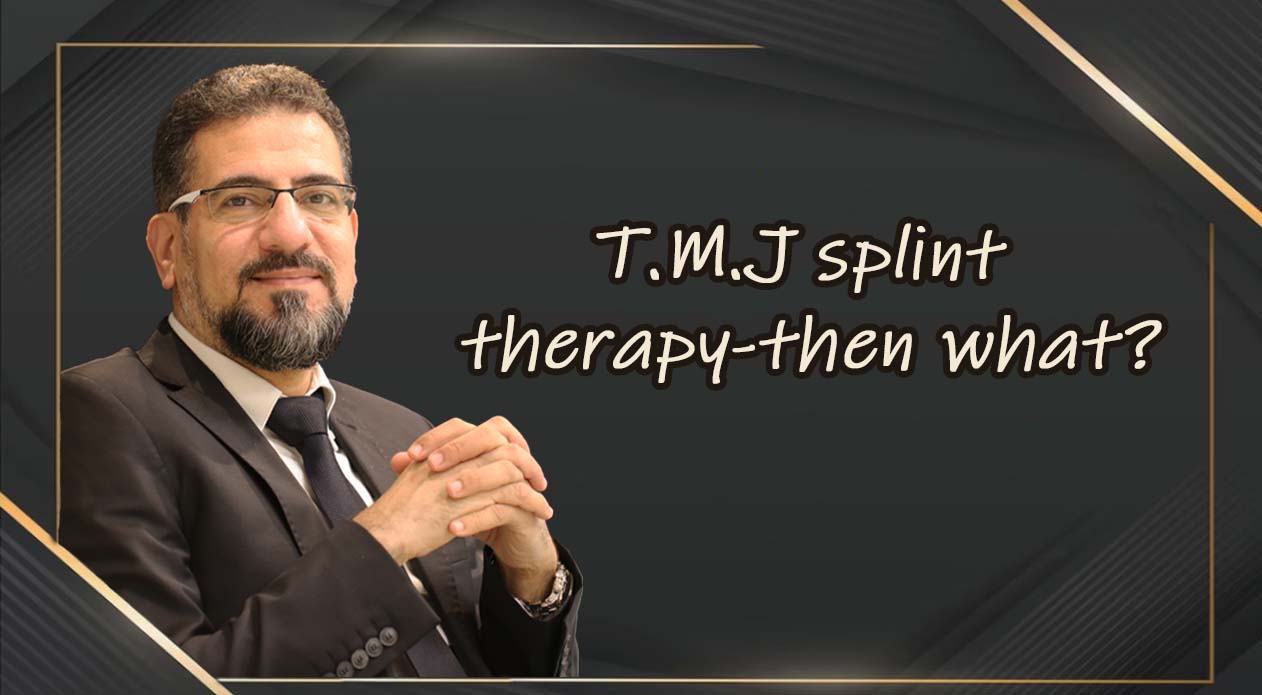Prof. Ayman Hegab is a Professor of Oral & Maxillofacial Surgery, Faculty of Dental Medicine. Al-Azhar University. Cairo. Egypt.
Editorial
Temporomandibular joint (TMJ) disorders represent a significant public health problem and are generally characterized by the presence of TMJ pain, tenderness, joint sound, and abnormal mouth opening. Temporomandibular joint internal derangement (TMJID) is the most common form of the TMJ disorders with broad non-surgical and surgical treatment modalities. Splint therapy is a wide spread and common nonsurgical option for management of TMJ-ID. The reason behind considering splint therapy as reversible treatment is that should be consider as a first stage of the treatment of the TMJID. The second stage and final stage is the success of transferring the therapeutic splint position into permanent occlusion maintaining the temporomandibular joint position achieved in the first stage of splint therapy.
In order to eliminate the patient’s dependence upon the appliance, we have to make permanent changes to the patient’s occlusion so that; the occlusion without the splint is that same as it is with the splint in situ. Even the role of occlusion is still controversial, but the clinician should be careful in changing the patient’s occlusion irreversibly from the beginning. Occlusal disturbances can set off a chain of reaction radiating to the musculoskeletal system. This is manifested in typical symptoms such as headache, neck pain and back ache. The second stage of treatment (Occlusion Stage) can be moved to after improvement of the TMJ-ID with the splint therapy which should be evaluated by post-treatment MRI beside the clinical results. While; in some cases the combination of the minor occlusal adjustment in combination with the splint therapy can lead to rapid improvement. Occlusion Stage can be achieved by one of the following procedures which should be selected independent according to the patient occlusion state.
Occlusal equilibration
Occlusal Equilibration is a term utilized to describe the procedures of selective adjustment of the biting surface of the teeth by grinding the enamel (outer layer of the tooth) so that the upper and lower teeth fit together (the intercuspal position) harmoniously. Occlusal equilibration can provide selected patients with the most conservative, predictable, and safest treatment possible. Moreover; occlusal equilibration can avoid the need for additional complex treatments.
Occlusal Equilibration requires proper case selection with occlusal analysis. Occlusion analysis is the study of the relationship of the occlusal surfaces of opposing teeth and their associated functional harmonies. An impression of the upper and lower jaws was made and models were created. The wax impression was use to mount the upper and lower models on the articulator. The primary purpose of occlusion analysis is to reveal interferences in articulation which cannot be observed directly in the mouth. Recently; one of newest and most exciting technologies is the T-Scan Computerized Occlusal Analysis System. The heart of T-Scan technology is a disposable, extremely thin, flexible sensor. By biting and chewing against the sensor, a three dimensional view of your bite is displayed on computer screen. Then the bite can be easily adjusted and checked with the sensor. The process is repeated until the biting forces are equalized.
Crowns and bridges
If, however, the occlusal discrepancy requires too much tooth reduction which can result in teeth damage, other alternatives must be used. Sometimes it is necessary to restore, or crown, several or all the teeth in order to achieve an ideal occlusion. This is rather invasive and usually quite costly to the patient. Selection of the case is the key of success of using crowns and bridges for occlusion adjustment especially with the TMD patients.
Orthodontic treatment
The restoration of normal temporomandibular joint function in static and dynamic occlusion can be the key the successful treatment of TMD. The question of whether a relationship exists between orthodontic treatment, abnormal condyle and disc position, and temporomandibular disorders (TMD) has been investigated for many years. Despite the abundance of studies, the question continues to trouble orthodontic community over the last decade. Two main questions about temporomandibular disorders (TMD) in relation to malocclusion/orthodontic treatment seem to be of interest. The first concerns correlations between TMD and different kinds of functional or morphologic malocclusions. The other seeks to determine whether the severity and prevalence of TMD are influenced or even caused by orthodontic treatment.
Orthodontists were introduced to the field of TMD following the theorizing of Thompson1 who believed that malocclusion caused the posterior and superior displacement of the condyle. Hence, there was the need to bring downward and forward the condyle by freeing up the trapped mandible. Since then, various malocclusions have been associated with TMD signs or symptoms. Then, orthodontic treatment has to be performed according to the rules that allow an ‘ideal and stable’ result to be achieved. The working hypothesis appears to be that if the teeth bite incorrectly in the form of a malocclusion, this can then apply a restriction to the function of the TMJ or worse still, predispose it to future pathological deterioration. By correcting the alignment and arrangement of the teeth the TMJ will remodel to the overriding new functional needs thus treating any disease processes/malfunction of joint integrity and allowing normal function to continue unabated for the life of the patient.
Orthognathic surgery
In case of skeletal discrepancy in the TMJ-ID patients, the orthognathic surgery can be improving the outcome results. A successful functional outcome depends on the final TMJ position. The patients may benefit from corrective orthognathic surgery. Overall, surgery did not accomplish to change the presurgical disc position or correct the anterior disc displacement; while it tended to improve pre existing arthralgia. The amount of mandibular advancement, the degree of maxillomandibular counter-clockwise rotation and the rigidity of the fixation technique seemed to influence TMJ position.
Funding
None.
Acknowledgments
None.
Conflicts of interest
The author declares there is no conflict of interest.
References
(1) Thompson JR. Temporomandibular disorders: diagnosis and treatment. In: Sarnat BG, editor. The temporomandibular joint. 2nd ed. 1964. 146– 184 p.
(2) Moss ML, Salentijn L. The primary role of functional matrices in facial growth. American Journal of Orthodontics. 1969:55(6):566–577.




 Ask Prof. Hegab
Ask Prof. Hegab +201004401598
+201004401598

